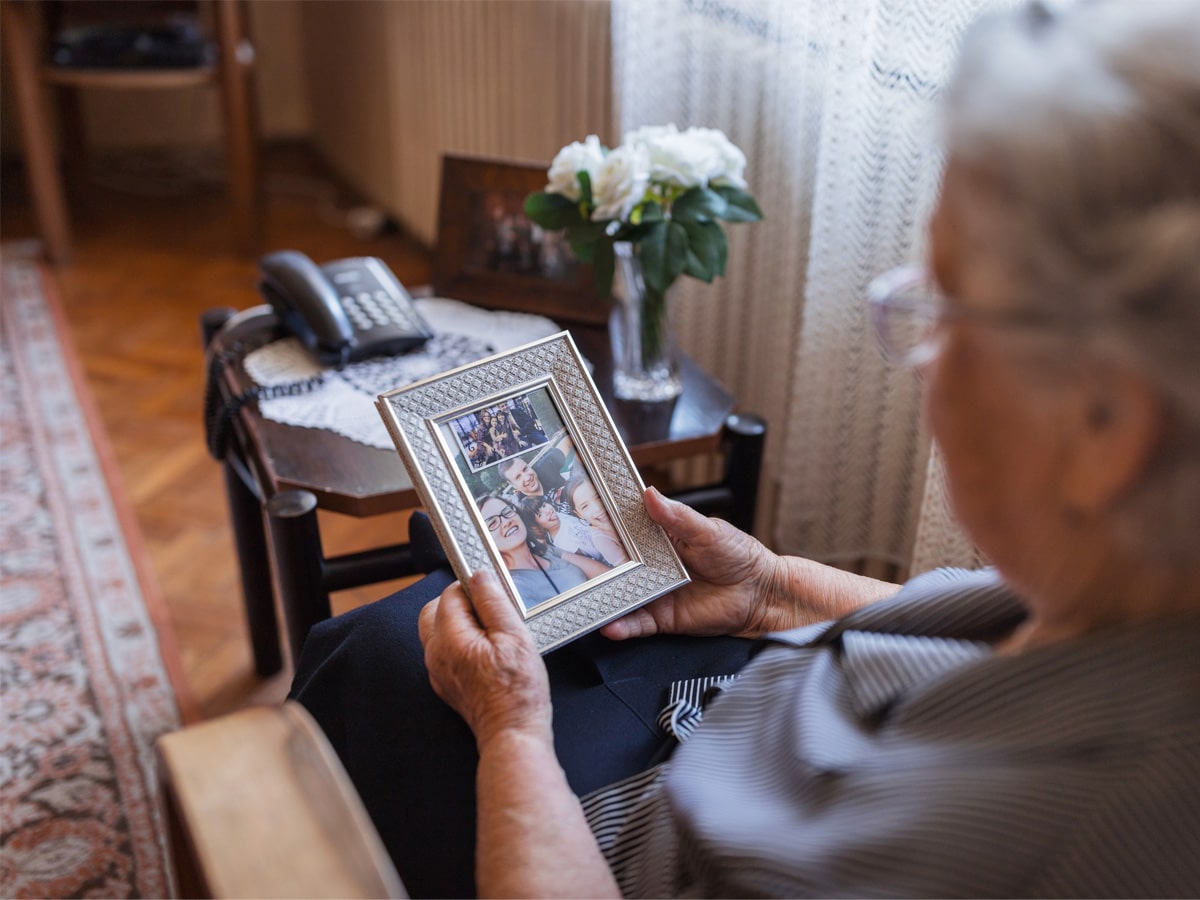
Moving to a memory care community is a big adjustment for individuals living with dementia. Getting used to new routines and surroundings takes time. Memory care provides daily structure in a secure environment, helping individuals with memory loss feel more at ease, maintain quality of life and thrive in their new home. Knowing what to bring and what to leave behind can help your loved one during this time of transition and beyond.
Things to Bring to Memory Care
1. Photos
Photos offer comfort and familiarity, whether framed, hung on a wall or in a photo album. Seeing familiar faces can help residents feel more at home. Photos can support reminiscence therapy to evoke memories and stimulate conversation. If possible, label each photo with who is in it or where it was. We recommend bringing copies to prevent originals from being lost or damaged.
2. Shadow Box Items
Shadow boxes help residents identify their apartment and showcase personal memories. These displays may include photos and small mementos, but avoid anything of high value. (More on that later.)
3. Furniture
Furniture can be nostalgic. If possible, arrange it as it was in their previous setting. For example, keep the bedside lamp on the same side of the bed. These small details can help ease the transition. The right piece of furniture in the right place can make an individual’s space more comfortable, both literally and figuratively.
4. Clothing
Clothing plays a large role in how people feel. Pick clothes that are comfortable, familiar and easy to manage. We recommend pants and slacks with elastic waistbands; as well as shirts, sweaters and jackets that button or zip up in front. Avoid slippers that could cause falls or robes that may catch on furniture. Label clothing and bring a basket or hamper to make laundry time easier for caregivers and housekeepers.
5. Linens and Cozy Blanket
Bring three sets of sheets to allow for regular laundering. Avoid silk items as they are slipper and can increase falls. Include a soft throw blanket to add comfort and warmth.
What Not to Bring to Memory Care
1. Valuables
Avoid bringing jewelry, precious heirlooms, antiques or other valuables. These items could be lost or misplaced, causing heartbreak and stress for you and your loved one.
2. Financial Items
Leave credit cards, checkbooks, Social Security cards and cash with the designated power of attorney. These items may be lost or misused in a memory care setting.
3. Anything Hazardous
With your loved one’s well-being as a top priority, prevent them from accessing items that could cause damage and/or bodily harm. This includes lighters, candles, tools, knives and cleaning products. Even common objects such as nail clippers, letter openers, scissors and sewing needles can pose risks.
4. Medications
All medications, including over-the-counter products, are stored and administered by memory care staff. No medications should be left in your loved one’s room.
5. Alcohol, Drugs and Tobacco
Do not bring alcohol, marijuana, THC or tobacco products. These are not permitted in most memory care communities.
6. Perishable Food
Be mindful of any food you might want to leave with your loved one. Even if there is a refrigerator, forgotten food can spoil.
7. Rugs
Rugs can often be a hazard that can lead to tripping or falling. This is especially true in residents’ bathrooms.
8. Small Electric Appliances
Do not bring small appliances like toasters, heating pads, space heaters, curling irons, coffee makers and microwaves. These can present danger for residents.
Final Tips Before Move-In
When in doubt about what you should or should not bring to memory care, just ask the professionals who will be caring for your loved one. They will be happy to help and guide you through the process.
Looking for memory care in the Des Moines, Iowa area? Meadowview of Clive offers compassionate support in a thoughtfully designed setting.
Disclaimer: This blog is for informational purposes only and does not provide medical or financial advice. Please consult your care team or financial advisor for personalized recommendations.
